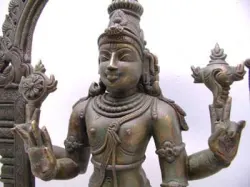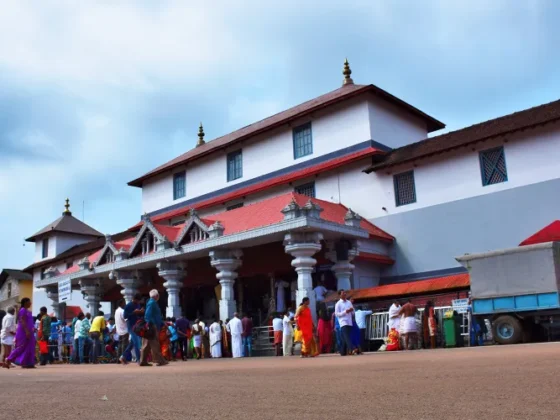Russia. Lord Vishnu. An Alien Stone.
A mysterious archaeological find in Russia has reignited debates about history, mythology, and even cosmic connections. An ancient idol of Lord Vishnu, dating back to the 7th–10th century, was unearthed in the Volga region—a place once thought to be far removed from Indian cultural influence. This discovery suggests that Vedic traditions and Hindu symbolism might have reached much farther than previously believed, possibly reshaping how we understand Eurasian cultural history.
But layered over this archaeological truth are sensational claims: whispers of an alien stone linked to the find. While mainstream archaeology confirms only the Vishnu idol, speculative theories blend mythology, UFO lore, and the unexplained into the narrative. Some connect it to declassified Soviet-era stories of mysterious stones and strange encounters in Siberia, while others interpret it as evidence of a forgotten cosmic history.
The Archaeological Discovery
The idol was found in Staraya Maina, an ancient settlement on the Volga River. Archaeologists have dated the site to be older than Kiev, often considered the cradle of Russian civilization. According to Dr. Alexander Kozhevin of Ulyanovsk State University, the find suggests that this region might have been part of a vast cultural and trade network reaching as far as India. The Vishnu idol, crafted in traditional style, depicts the deity with distinct iconography recognizable to Hindus even today.
Myth Meets Mystery
While the idol itself is a verified discovery, the so-called alien connection arises from Russia’s long history of mysterious lore. Declassified Cold War-era documents mention unexplained artifacts and encounters in Siberia, including alleged “stones of unknown origin” with supposed extraterrestrial ties. Though unproven, these stories feed into the narrative, suggesting that the Vishnu idol might not just be a cultural artifact but part of something much larger—possibly even cosmic.
Why It Matters
- Historical Shockwaves: The idol challenges conventional timelines of Russian civilization, suggesting ancient cultural exchanges between India and Eurasia.
- Cultural Links: The find fuels theories that Vedic traditions traveled beyond South Asia much earlier than believed, influencing distant lands.
- Myth + Mystery Fusion: Linking Lord Vishnu, preserver of the cosmos, with the idea of an extraterrestrial relic pushes the boundaries of historical imagination.
- The Cosmic Angle: Whether symbolic or literal, the notion of an “alien stone” transforms this into a story where faith, science, and myth collide.
Expert Reactions
Mainstream scholars caution against mixing verified history with unverified speculation. “The Vishnu idol is real and significant, but attaching alien theories risks overshadowing its true archaeological value,” says Dr. Kozhevin. On the other hand, alternative history enthusiasts argue that such crossovers between myth and science often hold kernels of truth, waiting for deeper exploration.
Conclusion
The Vishnu idol in Russia is real, the alien stone remains unverified—but together, they fuel a narrative that history just got cosmic. It’s a reminder that the past is not just about what we find in the ground, but also about the stories we dare to tell when facts and mysteries intertwine. From the banks of the Volga to the temples of India, and from ancient texts to modern conspiracy theories, this discovery stands at the crossroads of faith, history, and the unknown.
FOR MORE BLOGS -beyondthepunchlines.com

 Add to favorites
Add to favorites








